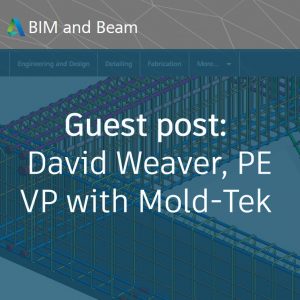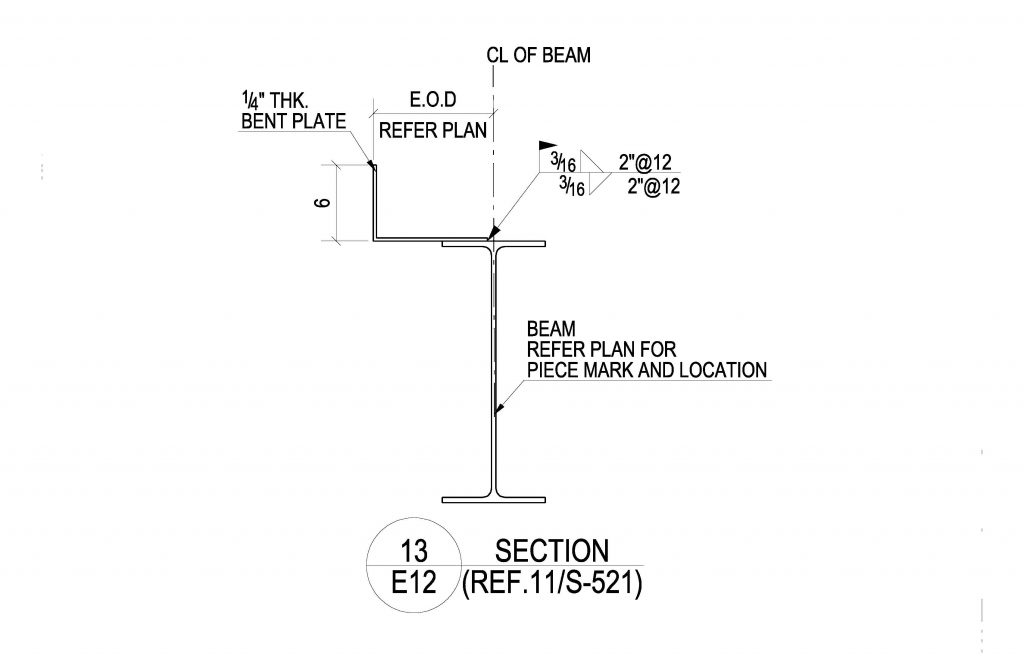
Autodesk is excited to welcome David Weaver, Vice President at Mold-Tek Technologies Ltd as a guest contributor to BIM and Beam. David is an evangelist and thought leader for the steel industry, and shares a unique insight on how project teams collaborate.
(or why fabricators should be happy if their detailer is asking a lot of questions)
Growing up and living in Colorado, a frequent meal for me is to take whatever food is around and smother it in a good green chili sauce. Top it with sour cream and guacamole, and serve it with a side of tortillas. There are even thriving local chain restaurants whose entire business model is to take the cheapest ingredients possible and smoother them in top notch green chili.
My mother in law has a different taste in food. She grew up in Massachusetts and spent most of her adult life in Northeast Virginia, Fairfax. I still remember the look of … concern in her face the first time she saw me do this. She is a great cook, and I have always enjoyed eating her food, but let’s just say that my ingredients and techniques are not within her repertoire.
What can a fabricator learn from this? Simple. That standards and techniques can be regional. Just because a shop or erector has always been doing something a certain way, doesn’t mean that it is an industry standard. Take for example the angle or bent plate attached to a beam top flange to form an edge of slab detail. In Colorado, the typical approach is for it to be fully field attached. The field even cuts the pieces to length and performs any other cuts to get it around columns. Alternatively, there is a fabricator in the New England area that will shop attach it, but only with bolts in long slots, so that the field can perform adjustments then weld into position. I’ve also seen projects in Las Vegas where this material is shop attached and welded with no field work.

A typical edge of slab detail (Courtesy of Mold-Tek Technologies Ltd.)
My point is, things that fabricators think are industry standards might be unique to their region, or even only unique to their company.
It used to be that detailers worked regionally. It was too cumbersome and caused too much of a delay to ship physical drawings too great of a distance. But today’s technology allows electronic drawing files to be sent across the world in the matter of seconds. It often takes longer to type the email notifying the fabricator that drawings are posted to a file sharing site, then it does to actually post the drawings. This allows detailers to work across all regions of the US and even the world. Meaning they might not be familiar with the exact approach that a fabricator wants to use for a specific detail. This is especially true for the first time a detailer works with a fabricator.
A detailer with little experience will not know when to ask for the fabricator or erector’s preference. They may just apply the same approach that they used on their last project, even though that last project was for a different fabricator who has different preferences. Experienced detailers know when to ask about preferences. Unfortunately, this results in probably the biggest complaint I hear from fabricators, “The detailer is asking too many questions!” (typically in much more colorful language that I am using here).
Questions are exactly what you want from your detailer. When a detailer is flooding you with basic questions, don’t assume they are delaying the project, or are inexperienced. In reality, they might have just the right amount of experience to know that the question needs to be asked.
Related Articles
How to forge a detailer-fabricator relationship as strong as steel
The post David Weaver from Mold-Tek shares what steel fabricators can learn from green chili appeared first on BIM and Beam.
from my Autodesk source Bim & Beam: BIM and Beam at http://blogs.autodesk.com/bim-and-beam/2017/06/14/david-weaver-mold-tek-guest-post/
via IFTTT

No comments:
Post a Comment